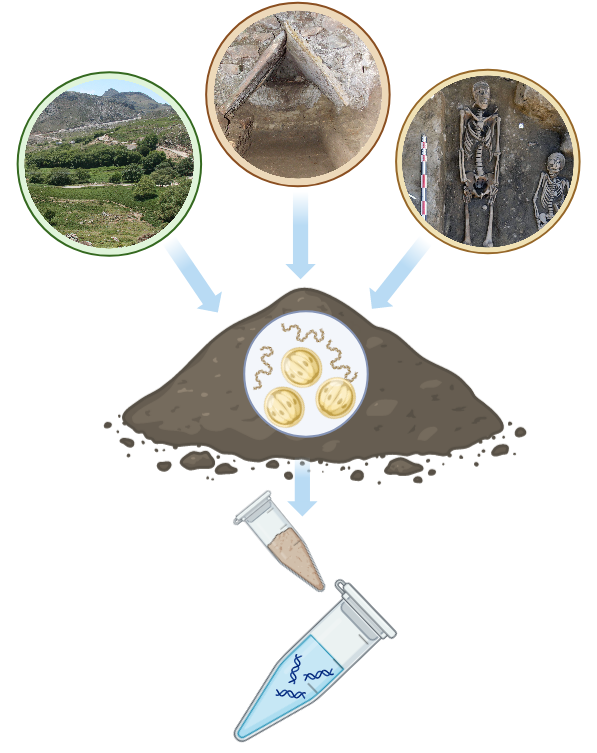The PPG-3 project
Paleoparasitology and paleogenetics, looking for ancient cryptosporidia
The observable remains of parasites can be of different natures depending on their physiology and ecology, and come from a variety of chrono-cultural and sampling contexts. In order to detect these traces in ancient environments and societies over time, the PPG-3 project is particularly interested in sedimentary matrices that may have preserved the microscopic and molecular remains of cryptosporidia that were once disseminated there, as well as coprolites or paleofeces. These sediments/coprolites may come from coring in a watershed frequented by livestock over long historical periods, from archaeological structures such as sewers or ancient latrines, or from burials that allow a paleoepidemiological approach. These samples are likely to have preserved traces of the faecal matter they once consisted of in whole or in part, and a fortiori those of gastrointestinal parasites, including microscopic Cryptosporidium cysts and fragments of its genome.
A recent review of the literature (Rochet et al., 2023) provides an overview of detections of this parasite in the paleo/archaeological records. Surprisingly, very little work has been published on this parasite in particular, and very little has focused on the detection of aDNA, but rather on the detection of paleoantigens using medical immunodiagnostic kits that have not been optimized for the analysis of ancient samples.
The development of tools specially adapted to the search for highly degraded (“taphonomized”) DNA molecules and to a greater diversity of species (beyond the taxa targeted by medical kits) therefore seems an essential first step towards a better understanding of the emergence and spread of cryptosporidia over time, and the interactions that enabled them.

